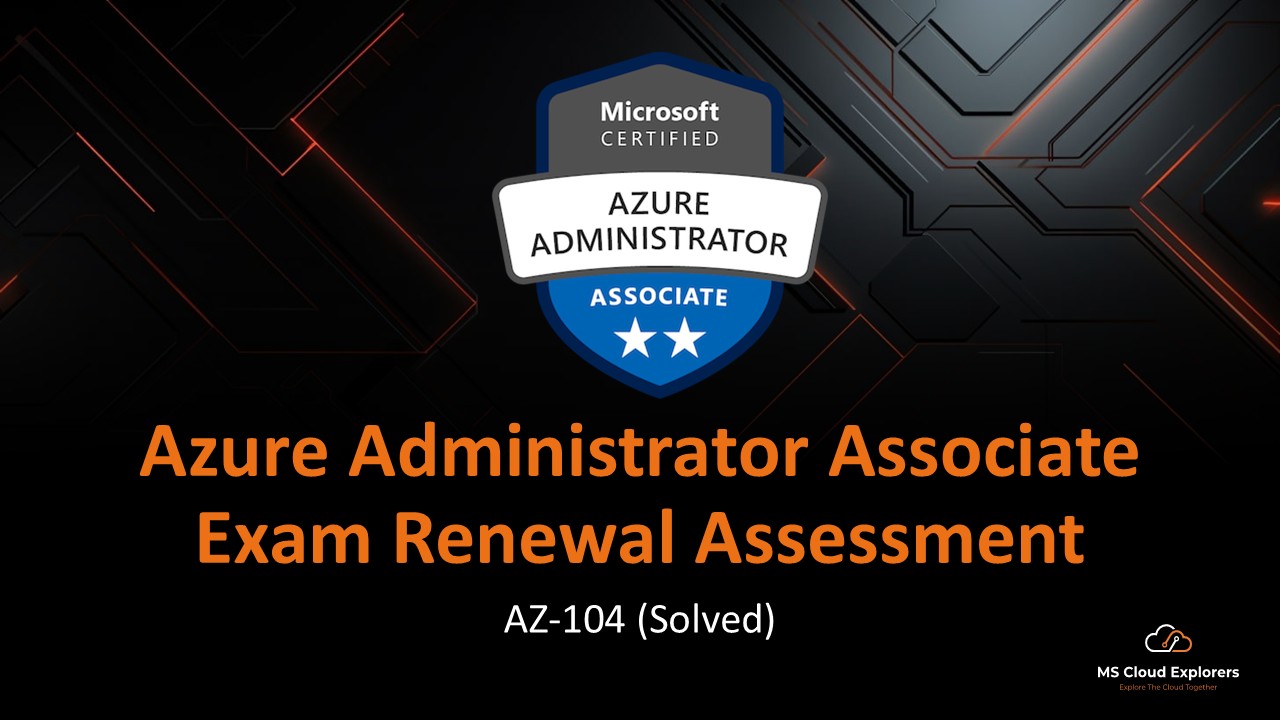
- November 6, 2024
- Deepak
- 2

AZ-104 Assessment
Azure Administrator Assessment
AZ-104 Exam Renewal Test
You are in charge of MSCloudApp2025, an Azure App Service that is currently using the Standard App Service Plan and has five deployment slots available. The Contributor role for MSCloudApp2025 is held by a user, User1. You must give User1 permission to add more deployment slots.
What ought one to do?
Assign User1 the Owner role for MSCloudApp2025.
Assign User1 the Website Contributor role for MSCloudApp2025.
Scale out the MSCloudApp2025 App Service plan.
Scale up the MSCloudApp2025 App Service plan.
Reveal Solution
Correct Answer: Assign User1 the Owner role for MSCloudApp2025.
Explanation: The Contributor role does not grant permission to add deployment slots. Only the Owner role provides full control, including creating deployment slots. Scaling options do not impact user permissions.
The following Azure web apps are being deployed by you:
Web-App1: Windows Server 2016
Web-App2: Windows Server 2022
Web-App3: Ubuntu Server
Web-App4: Red Hat Enterprise Linux
How many App Service Plans is the bare minimum needed?
1
2
3
4
Reveal Solution
Correct Answer: 2
Explanation: Windows-based apps (Web-App1 and Web-App2) can share one App Service Plan. Similarly, Linux-based apps (Web-App3 and Web-App4) can share another. So, only two plans are needed—one for each OS type.
You are preparing to deploy a web application named WebApp1 with the following specifications:
Publish Method: Docker Container
Operating System: Windows
Deployment Region: West US
App Service Plan: ASP-RG1-8bcf
Your goal is to have WebApp1 run using the ASP.NET V4.8 runtime.
Which configuration setting needs to be modified to meet this requirement?
Operating System
Publish
Region
Windows Plan
Reveal Solution
Correct Answer: Publish
Explanation: ASP.NET V4.8 is available only for apps published as “Code,” not containers. To use this runtime, switch the Publish setting from Docker Container to Code.
You are managing a web application named SalesPortalApp, which is currently hosted on a Standard App Service Plan. You intend to configure deployment slots for this application.
What is the maximum number of deployment slots you can add in this App Service Plan?
1
4
6
9
Reveal Solution
Correct Answer: 4
Explanation: The Standard App Service Plan allows up to five slots, including the production slot. Therefore, you can add four additional slots.
Your Azure virtual network includes the following subnets:
AppSubnet – contains virtual machines
WebSubnet – used by a web application
ContainerSubnet – currently hosting container instances
You are planning to deploy a new container instance named InventoryContainer.
Which subnet(s) are suitable for deploying InventoryContainer?
AppSubnet and ContainerSubnet only
AppSubnet, WebSubnet, and ContainerSubnet
WebSubnet and ContainerSubnet only
ContainerSubnet only
Reveal Solution
Correct Answer: ContainerSubnet only
Explanation: Azure Container Instances must be deployed in subnets configured to support them. ContainerSubnet only is explicitly prepared for containers.
You have a Windows Server 2022 virtual machine named AppServer01, and an Azure Container Registry that stores a container image called Image1.
What must be installed on AppServer01 to run Image1?
Azure Portal
Docker
Hyper-V role
.NET Framework 4.7
Reveal Solution
Correct Answer: Docker
Explanation: Docker provides the necessary container runtime to run images pulled from the Azure Container Registry.
Your Azure subscription for MSCloudExplorers includes the following resources:
Storage Account:
msceprodstorageContainer Instance:
msce-app-containerVirtual Network:
MSCE-VNetwith the following subnets:Subnet-Storage – configured with a service endpoint for
Microsoft.StorageSubnet-Containers – currently hosting the
msce-app-containerSubnet-Backup – currently not in use
You are planning to deploy a new container instance named msce-container5.
Which subnet(s) are eligible for deploying msce-container5?
Subnet-Storage, Subnet-Containers, and Subnet-Backup
Subnet-Containers and Subnet-Backup only
Subnet-Containers only
Subnet-Backup only
Reveal Solution
Correct Answer: Subnet-Containers and Subnet-Backup only
Explanation:
Subnet-Storage is configured with a service endpoint specifically for Microsoft.Storage, which limits its use to storage-related resources and is not suitable for container instances.
On the other hand, Subnet-Containers is already hosting container workloads, and Subnet-Backup is currently unused and can be configured for container deployments—making both subnets valid options for deploying msce-container5.
Your organization, MSCloudExplorers, has an Azure Storage Account with a blob container named container1. You need to control and manage access to this container.
Which of the following authorization methods can be used to grant access to container1?
Microsoft Entra ID only
Microsoft Entra ID, Shared Access Signature, or Certificate only
Microsoft Entra ID, Storage Account Key, or Shared Access Signature only
Microsoft Entra ID, Storage Account Key, Shared Access Signature, or Certificate
Storage Account Key or Shared Access Signature only
Reveal Solution
Correct Answer: Microsoft Entra ID, Storage Key, or Shared Access Signature only
Explanation: Certificates are not valid for direct blob access. Valid methods include Entra ID, storage account keys, and SAS.
Your organization, MSCloudExplorers, has the following Azure storage accounts:
msceprodstorage – configured as StorageV2
mscearchivestorage – configured as BlobStorage
mscefilestorage – configured as FileStorage
You want to implement lifecycle management policies to automatically transition or delete data based on rules.
Which of these storage accounts support lifecycle management?
msceprodstorage and mscearchivestorage only
msceprodstorage and mscefilestorage only
msceprodstorage only
All three: msceprodstorage, mscearchivestorage, and mscefilestorage
mscearchivestorage and mscefilestorage only
Reveal Solution
Correct Answer: A. msceprodstorage and mscearchivestorage only
Explanation: Lifecycle management is supported for StorageV2 and BlobStorage accounts because they both support blob-level tiering and automatic rule-based management.
FileStorage accounts do not support lifecycle management policies, as these policies are specific to blob data.
In your MSCloudExplorers environment, you have an Azure Storage account named msceprodstorage. You configure two encryption scopes:
Scope1 – uses Microsoft-managed keys
Scope2 – uses Customer-managed keys (CMK)
You plan to use Scope2 for data encryption.
Which Azure Storage services can use Scope2 for encryption with customer-managed keys?
Blob and File only
Blob, File, Table, and Queue
Blob only
File only
Table and Queue only
Reveal Solution
Correct Answer: C. Blob only
Explanation: Currently, encryption scopes with Customer-managed keys (CMK) are supported only for blob data within an Azure Storage account. Services like File, Table, and Queue storage do not support CMK-based encryption scopes.
We’d love your feedback!
Share your thoughts on the Renewal Test and help us improve by reporting any inaccurate answers.
🔗 Explore more Renewal Tests at mscloudexplorers.com/learn
📘 Discover more Microsoft 365 & Intune-related blogs at mscloudexplorers.com/blog
🔔 Follow us on LinkedIn for regular updates, tips, and community insights.
[ays_quiz id=’2′]

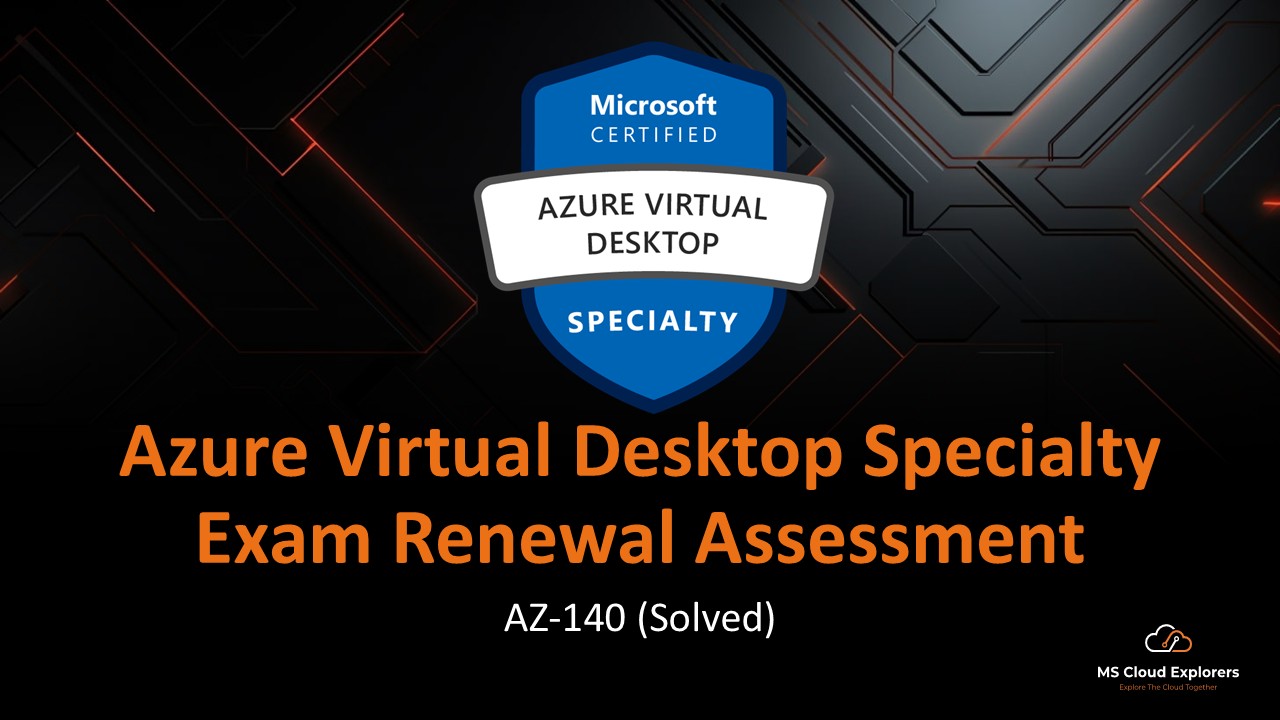
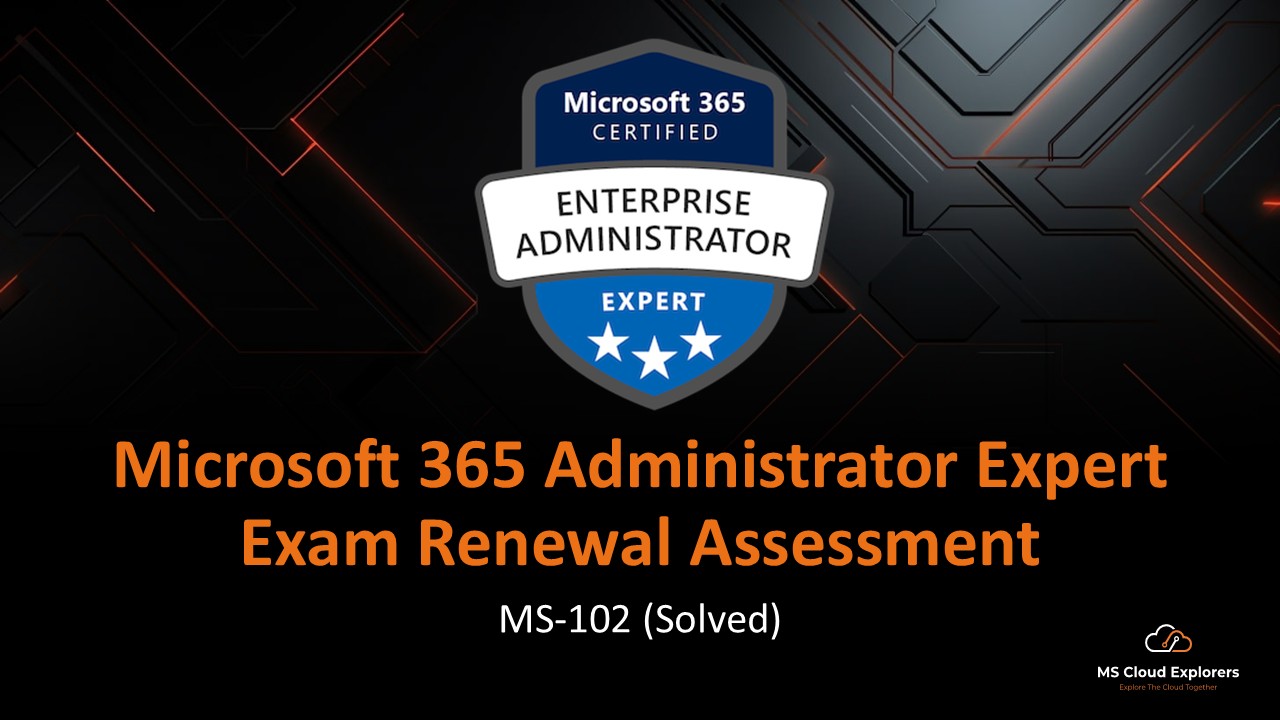
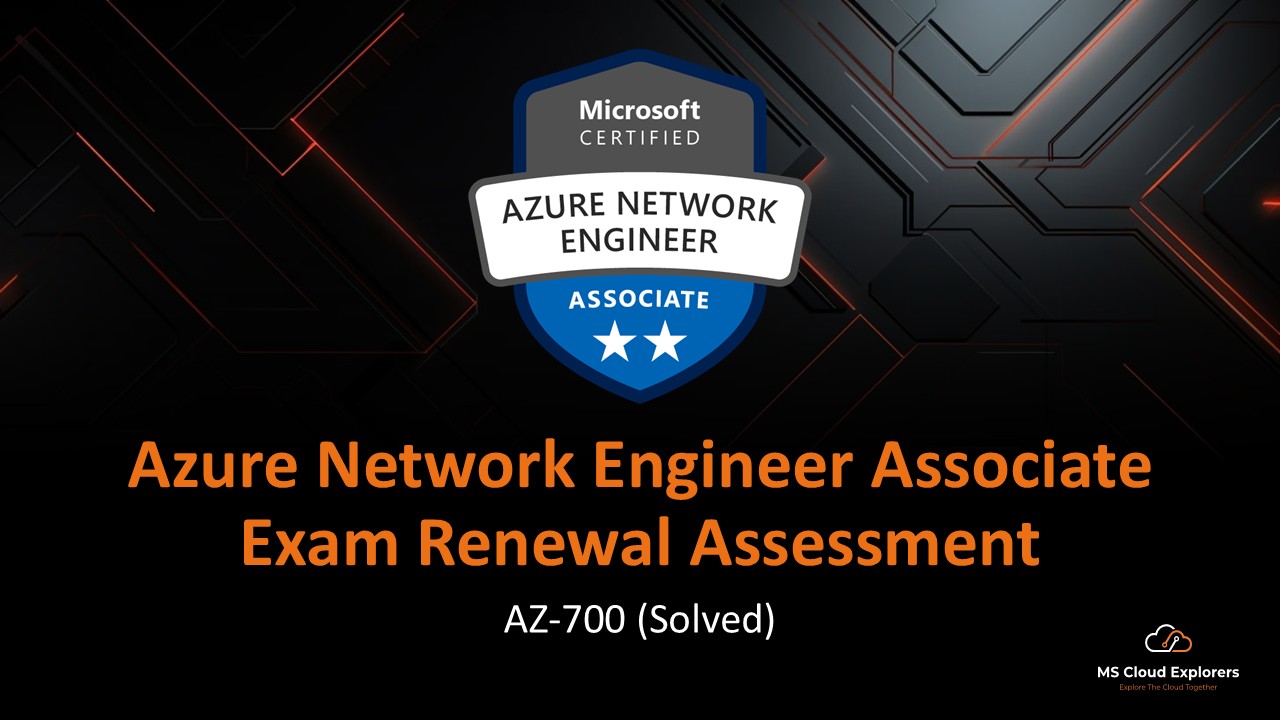
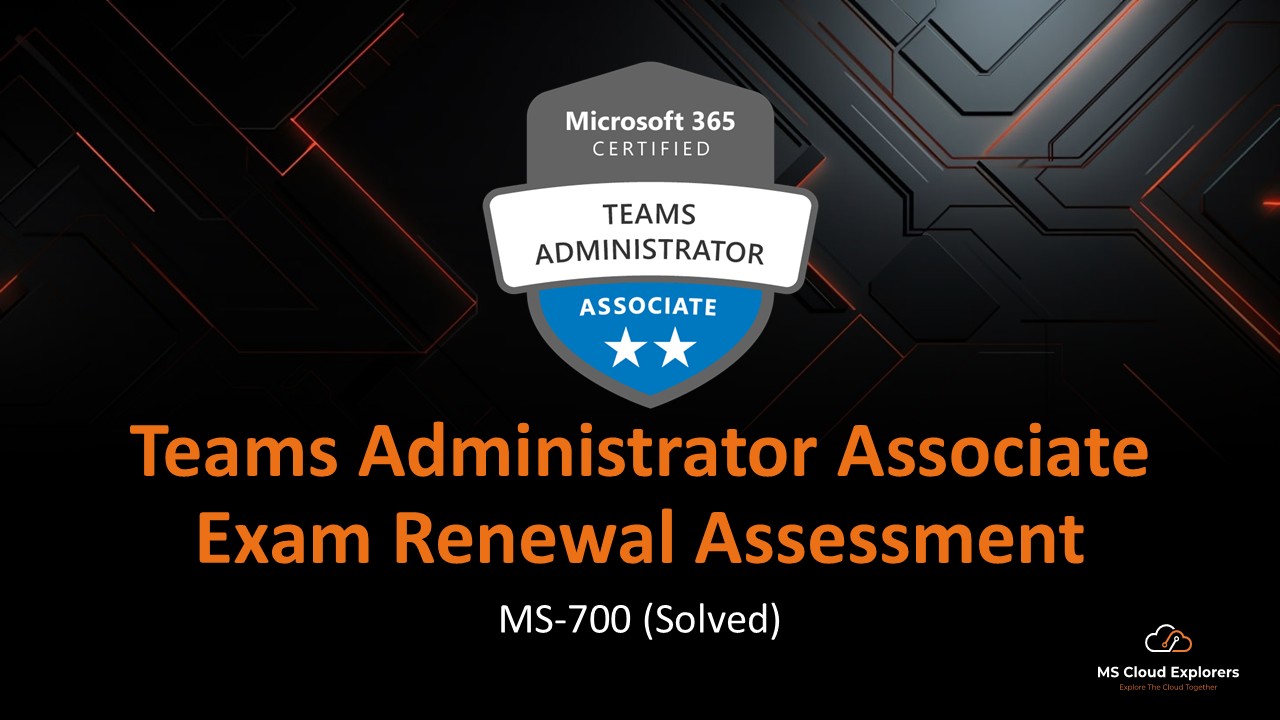
Thanks for providing all the assessment questions and answers. However, it seems a couple of the answers might not be correct.
Thank you for pointing that out—we really appreciate the feedback! 🙏
While we strive to ensure all answers are accurate and up to date, occasional changes in Microsoft’s assessment content can lead to discrepancies. If you could let us know which questions seemed off, we’ll double-check and update the post accordingly. Thanks again for helping us keep the content reliable for everyone!